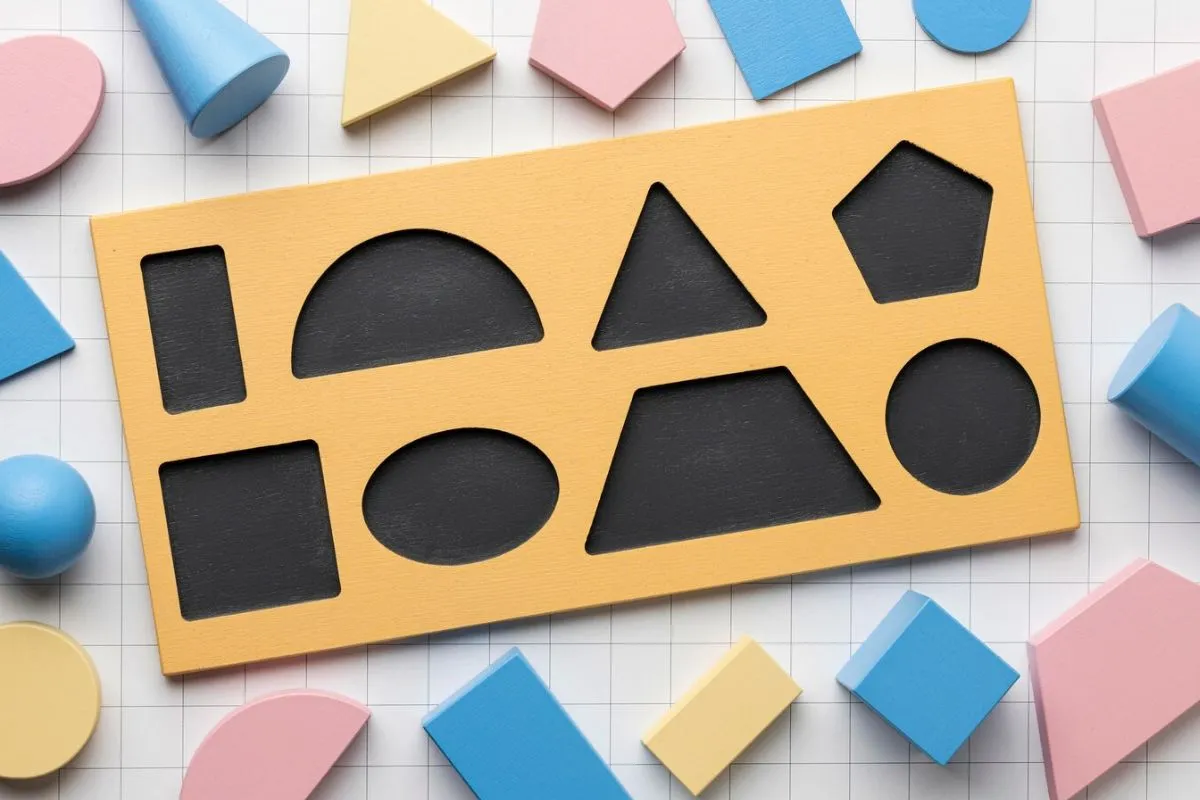When we delve into symmetry and group theory in visual arts, it becomes evident how these mathematical concepts influence artistic expression. Symmetry and group theory are not just confined to mathematics; they play a crucial role in art.
Artistic composition often employs symmetry to create balance and harmony. By understanding group theory, artists can craft intricate patterns effortlessly.
This article explores the applications and examples of symmetry and group theory in visual arts, highlighting their significance in shaping visual aesthetics.
Fundamentals of Symmetry in Art
Types of Symmetry
Symmetry, in its essence, refers to the balanced distribution of duplicated elements. Various types of symmetry include reflectional, rotational, and translational symmetry. Reflectional symmetry involves mirroring an object along an axis, while rotational symmetry revolves around a central point.
Translational symmetry, on the other hand, entails repeating elements at regular intervals. Each type of symmetry contributes to the overall harmony and balance in a visual composition, making the artwork aesthetically pleasing.
By employing these symmetrical techniques, artists can create highly structured and visually appealing patterns, enhancing the viewer’s experience and the artwork’s visual coherence.
Examples of Symmetry in Art
The use of symmetry is evident in various forms of art, from classical works to modern designs. For example, the Taj Mahal is a prime illustration of bilateral symmetry, where the building’s mirroring on either side of a central axis creates stunning balance and harmony.
In the realm of contemporary art, M.C. Escher’s works are renowned for their complex use of symmetry, particularly his tessellations, which employ translational symmetry to craft repetitive, interconnected patterns.
Moreover, many traditional cultural designs, such as mandalas and Islamic geometric patterns, utilize precise symmetrical patterns to convey spiritual symbolism and intricate detail.
The Role of Group Theory in Art
Understanding Group Theory
Group theory, a branch of mathematics that studies algebraic structures known as groups, provides a framework for understanding symmetrical patterns. In art, group theory helps create and analyze symmetrical designs and patterns.
By leveraging group theory, artists can systematically approach the creation of complex patterns, ensuring each element aligns and interacts harmoniously. This mathematical approach enriches artistic endeavors, allowing for intricate designs.
Group theory also aids in the classification of symmetries, offering artists a toolkit to explore diverse symmetrical forms, enhancing their creative repertoire.
Applications of Group Theory in Visual Arts
In visual arts, group theory facilitates the creation of elaborate designs like tiling patterns and frieze patterns. Tiling patterns involve covering a plane with geometric shapes without gaps or overlaps, employing translational symmetry.
Frieze patterns, often seen in borders and architectural details, use group theory to achieve repetitive, linear designs. Understanding group theory allows artists to explore seven distinct types of frieze patterns, each defined by their symmetrical properties.
Additionally, group theory’s principles are applied in computer graphics and digital art for generating complex, algorithmically driven designs, pushing the boundaries of modern artistic expression.
Symmetry, Space, and Composition
Symmetry and Spatial Organization
In visual arts, symmetry significantly influences spatial organization, guiding the viewer’s eye and creating a sense of order. Symmetry contributes to a cohesive composition by balancing visual elements across the space.
Artists utilize symmetry to establish focal points, leading the viewer through the artwork while maintaining a harmonious flow. This deliberate spatial arrangement enhances the overall visual impact.
Effective use of symmetry in spatial organization ensures all elements within the artwork are interconnected, achieving visual coherence.
Symmetry in Design and Composition
Design and composition in visual arts heavily rely on symmetry to achieve balance and unity. Symmetrical compositions, such as radial and bilateral symmetry, offer stability and aesthetic appeal.
Radial symmetry emanates from a central point, often seen in mandalas, where elements radiate outwards symmetrically. Bilateral symmetry, common in portraits and architecture, mirrors elements along a vertical axis.
Incorporating symmetry into design and composition not only enhances visual aesthetics but also conveys a sense of order and intentionality, enriching the viewer’s engagement with the artwork.
Patterns and Repetition
Creating Visual Harmony through Patterns
Patterns play a crucial role in establishing visual harmony in art. Repetition of elements, guided by symmetry and group theory, creates patterns that resonate aesthetically with viewers.
Symmetry ensures these patterns are balanced and cohesive, while group theory provides mathematical precision in their arrangement. This synergy between symmetry and patterns elevates the visual appeal.
Artists harness the power of patterns and repetition to create dynamic, immersive experiences, engaging viewers through rhythmic, harmonious designs.
Examples of Pattern Usage in Art
Many art forms, from textiles to murals, demonstrate the effective use of patterns. Traditional Persian rugs, for instance, showcase intricate patterns using translational symmetry, producing mesmerizing designs.
Similarly, contemporary artists like Yayoi Kusama employ repetitive dot patterns to evoke visual fascination and psychological impact, emphasizing the power of pattern repetition.
Patterns in nature, such as the honeycomb structure, inspire artists to mimic these naturally occurring repetitions, illustrating the inherent beauty of symmetry and repetition in art.
Balancing Space through Repetition
Repetition in art is key to achieving balance and rhythm, ensuring the artwork’s elements are evenly distributed. This balanced repetition contributes to a unified composition, making the visual space coherent.
Artists use repetition to fill spaces systematically, avoiding clutter while maintaining visual interest. This technique ensures a harmonious interplay between individual elements and the overall composition.
By understanding and applying repetition, artists can craft balanced, captivating works that resonate deeply with viewers, emphasizing the importance of systematic design.
Furthering Artistic Creativity with Symmetry and Group Theory
Innovative Techniques and Practices
Understanding symmetry and group theory opens up new avenues for artistic innovation. Artists can experiment with unconventional patterns, challenging traditional aesthetics.
By breaking down complex designs using group theory, artists can create novel interactions and unexpected symmetrical alignments, pushing creative boundaries.
This mathematical foundation supports the development of unique artistic techniques, driving continual evolution in visual arts and design.
Symmetry and Technology in Art
Modern technology enhances the application of symmetry and group theory in art. Digital tools allow precise manipulation of symmetrical elements, fostering innovation.
Software like Adobe Illustrator leverages symmetrical grid systems, enabling artists to create intricate, balanced designs effortlessly. Algorithms based on group theory generate complex patterns rapidly.
These technological advancements democratize access to sophisticated design tools, empowering artists to explore the full potential of symmetry and group theory.
Case Studies: Symmetry in Modern Art
Examining contemporary artworks reveals profound applications of symmetry and group theory. For instance, Bridget Riley’s optical art exploits symmetrical patterns to create visual illusions.
Similarly, the digital artist Rafael Araujo uses mathematical precision and symmetry in his illustrations of nature, blending scientific accuracy with artistic beauty.
These case studies underscore the versatility of symmetry and group theory in enriching modern artistic practices, illustrating their broad impact on visual arts.
Conclusion: Enhancing Art with Symmetry and Group Theory
Incorporating symmetry and group theory profoundly impacts visual arts, influencing design, composition, balance, and harmony. By understanding these concepts, artists can create visually stunning and meticulously structured works.
From traditional patterns to cutting-edge digital art, symmetry and repetition shape artistic expressions. Exploring these mathematical foundations fosters creativity, enabling artists to push boundaries.
As technology continues to evolve, the synergy between art and mathematics will undoubtedly inspire future innovations, expanding the horizons of visual creativity.
For artists and enthusiasts alike, delving into symmetry and group theory offers valuable insights. Experiment with these principles in your artistic endeavors, enriching your visual compositions.
Frequently Asked Questions
What is symmetry in visual arts?
Symmetry in visual arts refers to the balanced distribution of duplicated elements, creating harmony and visual appeal. It includes types like reflectional, rotational, and translational symmetry.
How does group theory apply to art?
Group theory aids in creating and analyzing symmetrical patterns in art. It provides a mathematical framework to systematically approach complex designs, ensuring harmonious alignment of elements.
What are some examples of symmetry in art?
Examples include the use of bilateral symmetry in the Taj Mahal, M.C. Escher’s tessellations, and traditional mandalas and Islamic geometric patterns, showcasing various symmetrical techniques.
How do patterns contribute to visual harmony in art?
Patterns, formed through the repetition of elements, create visual harmony by ensuring balanced and systematic distribution. Symmetry and group theory enhance these patterns, making them cohesive and appealing.
What role does technology play in applying symmetry in art?
Technology enhances the application of symmetry in art, with digital tools enabling precise manipulation. Software and algorithms based on group theory facilitate the creation of complex, symmetrical designs.




